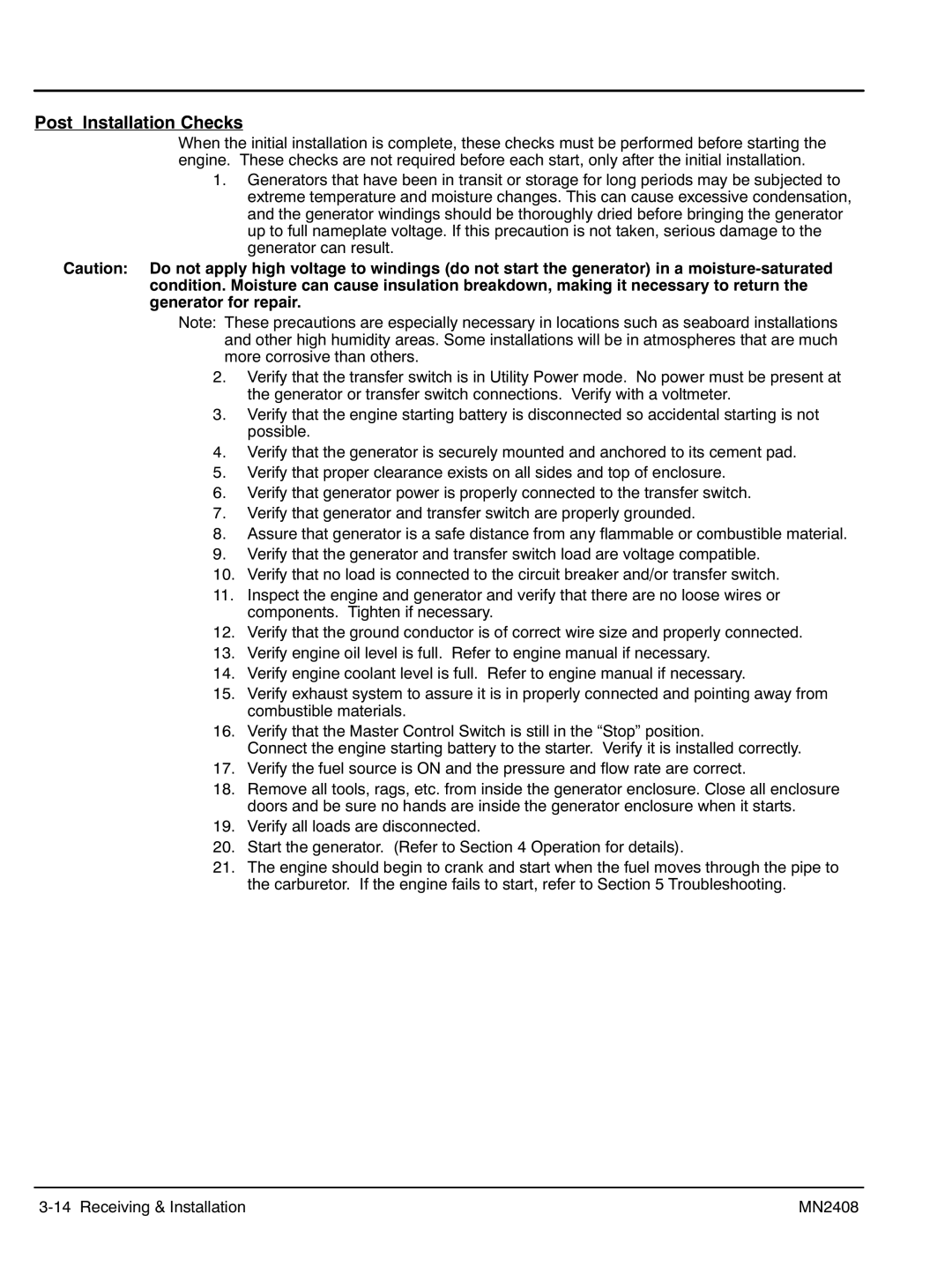
Post Installation Checks
When the initial installation is complete, these checks must be performed before starting the engine. These checks are not required before each start, only after the initial installation.
1.Generators that have been in transit or storage for long periods may be subjected to extreme temperature and moisture changes. This can cause excessive condensation, and the generator windings should be thoroughly dried before bringing the generator up to full nameplate voltage. If this precaution is not taken, serious damage to the generator can result.
Caution: Do not apply high voltage to windings (do not start the generator) in a
Note: These precautions are especially necessary in locations such as seaboard installations and other high humidity areas. Some installations will be in atmospheres that are much more corrosive than others.
2.Verify that the transfer switch is in Utility Power mode. No power must be present at the generator or transfer switch connections. Verify with a voltmeter.
3.Verify that the engine starting battery is disconnected so accidental starting is not possible.
4.Verify that the generator is securely mounted and anchored to its cement pad.
5.Verify that proper clearance exists on all sides and top of enclosure.
6.Verify that generator power is properly connected to the transfer switch.
7.Verify that generator and transfer switch are properly grounded.
8.Assure that generator is a safe distance from any flammable or combustible material.
9.Verify that the generator and transfer switch load are voltage compatible.
10.Verify that no load is connected to the circuit breaker and/or transfer switch.
11.Inspect the engine and generator and verify that there are no loose wires or components. Tighten if necessary.
12.Verify that the ground conductor is of correct wire size and properly connected.
13.Verify engine oil level is full. Refer to engine manual if necessary.
14.Verify engine coolant level is full. Refer to engine manual if necessary.
15.Verify exhaust system to assure it is in properly connected and pointing away from combustible materials.
16.Verify that the Master Control Switch is still in the “Stop” position.
Connect the engine starting battery to the starter. Verify it is installed correctly.
17.Verify the fuel source is ON and the pressure and flow rate are correct.
18.Remove all tools, rags, etc. from inside the generator enclosure. Close all enclosure doors and be sure no hands are inside the generator enclosure when it starts.
19.Verify all loads are disconnected.
20.Start the generator. (Refer to Section 4 Operation for details).
21.The engine should begin to crank and start when the fuel moves through the pipe to the carburetor. If the engine fails to start, refer to Section 5 Troubleshooting.
3‐14 Receiving & Installation | MN2408 |
